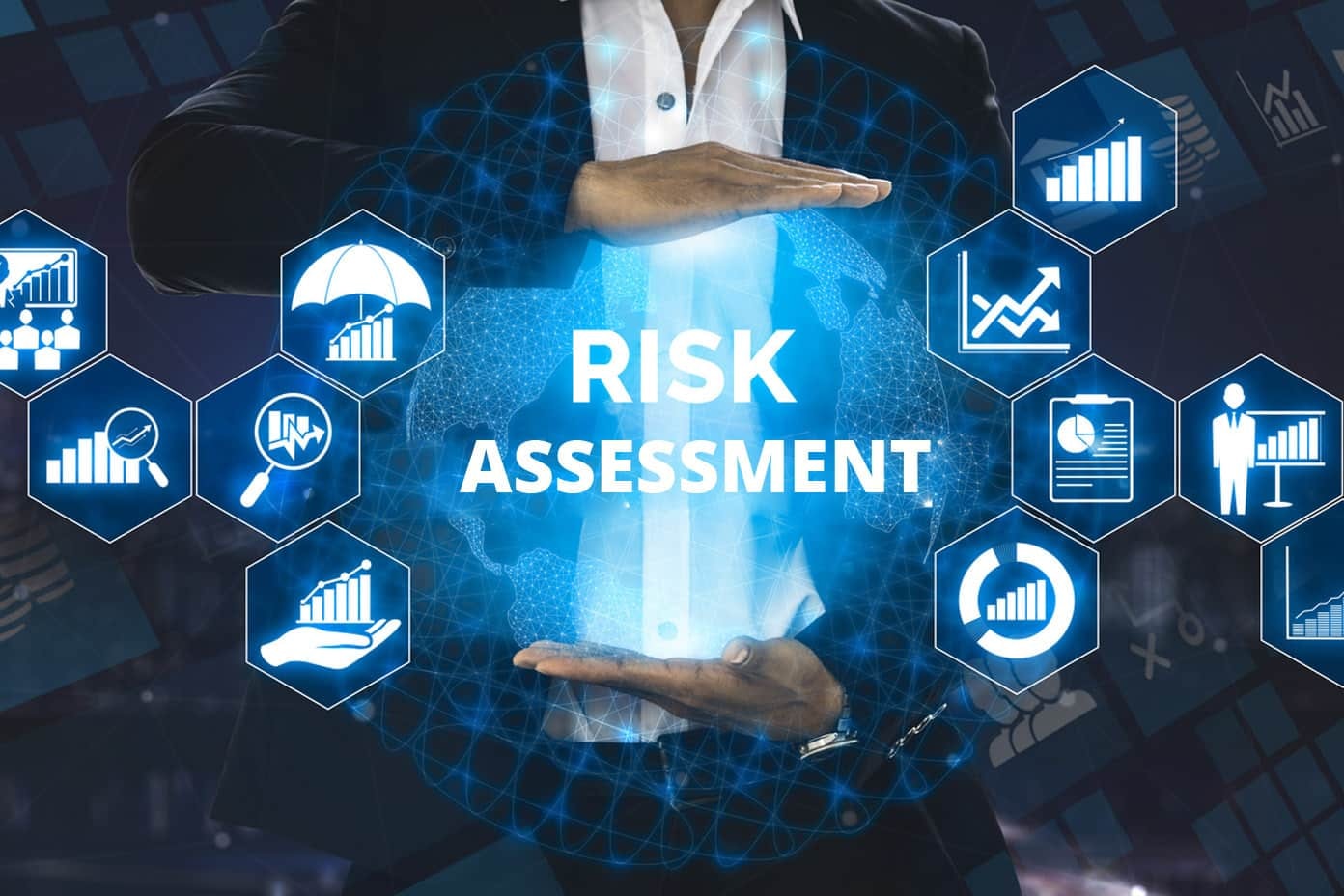The digital transformation has forced various organizations to create hybrid cloud environments utilizing the flexibility of public clouds in tandem with maintaining granular control over all mission-critical workloads on the private cloud environments. Although this approach provides a vast number of benefits in terms of scalability and cost-efficiency as well as agility, it also brings a notable number of issues related to security requirements.
Introduction to The Hybrid Cloud Environment

Source: Freepik
Hybrid cloud security includes the practices, processes, and technologies used to protect data applications and infrastructure across a hybrid cloud architecture. It refers to data encryption, data privacy and how it prevents the disclosure of sensitive information by ensuring that security risks are minimized in public cloud environments.
The need for a strong hybrid cloud security architecture is essential for data privacy, compliance with rules and regulations as well as protection against growing threats that ever before. Organizations that seek to protect their critical assets, establish trust with customers and meet business priorities in an increasingly complex, dynamic hybrid cloud environment need security controls functions effectively.
In this post, we will explore the most important components of hybrid cloud security and what administrative controls are needed to address risk management pain points.
Why Is Hybrid Cloud Security Important?

Source: Freepik
Security is the cornerstone of successful hybrid cloud adoption. It plays a critical role in safeguarding an organization’s digital assets and ensuring business continuity.
- Protecting sensitive data: Hybrid cloud environment typically includes a mix of both sensitive and less sensitive information. Strong security measures are crucial for ensuring that there will not be breaches, unauthorized access or leakage of confidential details.
- Ensuring business continuity: Efficient hybrid cloud security measures ensure that all BC plans are met and that businesses are not disrupted by any type of incident. There will be no downtime and any lost data caused will be recovered in minimum time, reducing the number of customers losing their faith in the respective company.
- Maintaining customer trust: With modern technologies, gaining the customer trust is key to creating a reputable big name. A properly protected environment ensures that their sensitive data or administrative operations are kept safe, by guaranteeing high-level data protection and processing.
Benefits of Hybrid Cloud Security
The benefits of hybrid cloud security are clear. A sufficiently robust cloud security position provides a range of benefits for many organizations in complex IT environments.
- Mitigation and management of risk: security controls deployed as part of a thorough security posture across multiple cloud instances and on-premises equipment serve to reduce the frequency and scope of security threats to information systems operated by organizations concerned. This resource management, then, serves to reduce both incidence rate and potential for incidence, offering organizations a degree of protection against such threats as data breaches and other adverse security incidents.
- Improved operations: a system of security controls deployed to ensure a secure cloud posture is manifest in more efficient operations, as organizations experience less downtime, security initiatives are satisfied more swiftly, and IT operations are compliant with industry standards and regulations. This offers organizations an increased rate of operational efficiency and cost-savings that present huge benefits over the course of the lifetime of the security program.
- Cost-efficiency: so while a security program may be a procedurally costly affair in and of itself, the costs that it can save an organization by averting data breaches, security incidents, and the negative legal and reputational consequences accompanying them are highly significant.
By prioritizing hybrid cloud security, organizations can build a resilient and secure IT environment that supports business growth and innovation.
The Components of Hybrid Cloud Security
Effective hybrid cloud security requires a layered approach that addresses vulnerabilities at multiple levels. The following components are essential for protecting your organization’s sensitive data and applications:
Network security solutions
Safeguarding the lines of communication between on-premises and cloud, including:
- Firewalls: These are the digital sentinels, which regulate network traffic according to a specific security criteria.
- Intrusion Detection Systems (IDS) and Intrusion Prevention Systems (IPS): Network security systems that search for the possible threats in network traffic to alert either notify a system administrator or automatically prevent it.
- VPNs (Virtual Private Networks): VPNs create secure connections over public networks by using encryption between remote users and private networks.
Data security standards

Source: Freepik
There are three broad forms of data protection: data at rest — (on the physical hard drive, storage device etc), in transit(over a network ) and in use(in memory ).
Encryption: The method you transform data into code that only others who have the key can read. There are a few reputated encryption systems:
- AES (Advanced Encryption Standard): Symmetric block cipher for secure data encryption.
- RSA (Rivest-Shamir-Adleman): An asymmetric cryptographic algorithm used for secure data transmission.
- Data Loss Prevention (DLP): Technologies and strategies used to identify, monitor and protect sensitive data in order prevent unauthorized access or use thereof.
Access controls: Devices that control access to data and information (for example, firewalls).
Application security
Securing applications and services by:
- Secure Coding Practices: Writing code more securely to avoid vulnerabilities.
- Malware analysis: Analyzing suspicious files and websites for malware from cyphers, cracking passwords to other activities on terminal meetings are a few factors in manipulating a computer resource.
- Vulnerability scanning: Detecting potential weaknesses in software applications or systems ahead of inspection with the goal of preventing it (e.Minimization).
- Web Application Firewalls (W) : These are security applications that monitor and analyze HTTP traffic to block harmful logic bombs from reaching the web application.
- Identity and Access Management (IAM): Managing who has access to what resources using:
- Authentication: Confirming the identity of a user or device.
- Authorization: Who Can Do What?
- Single Sign-On (SSO): A process that enables users to authenticate once and be able to access other applications.
- Two-Factor Authentication (MFA): It demands at least two forms of personal verification to grant access into systems or data.
Infrastructure security
Infrastructure security related to the protection of underlying hardware, virtualization, and operating systems can include:
- Patch management involves regularly applying software updates to close security vulnerabilities and enhance system performance.
- Vulnerability management: Identifying, assessing, and prioritizing vulnerabilities in systems and applications.
- Physical security: Protecting hardware and data centers from unauthorized access.
By addressing these key areas and implementing some technologies, organizations can ensure a strong foundation for hybrid cloud security.
Architectural Best Practices

-
Source:Freepik
- Unified security policy enforcement applies to establishing and maintaining consistent security policies across all environments.
- Zero trust architecture requires organizations to abandon implicit trust and conduct explicit verification for any access request.
- Microsegmentation premise is to isolate workloads and applications and, in doing so, avoid un-compartmentalized attacks and prevent lateral movement to a limited number of compartments.
- Advanced threat protection is an important part of the security strategy and integrates a wide range of options, including but not limited to, intrusion detection and prevention systems, endpoint protection, and security information, and event management system.
- Data protection should be guaranteed via encryption, while companies can also apply data loss prevention and backup and recovery.
- Identity and access management (IAM) requires organizations to apply role-based access control and privileged access management.
In conclusion, as a foundation, organizations can use the above meeting both defined and recommended architectural best practices.
Administrative Controls for Hybrid Cloud Security

Source: ControlUnion
Defining effective administrative controls is essential for addressing a large number of security threats in the context of complex hybrid cloud ecosystems. In particular, the administrative domain contributes to a better understanding of security governance and broad prescriptive and preventive measures that are focused on reducing the likelihood of data loss and data breaches. Therefore, a range of principles, procedures, and practices are particularly important to ensure effective operations in the context of multiple cloud environments and locations, along with associated privacy policy requirements. In this way, such frameworks contribute to the enhancement of the existing security practices and increased compliance through the careful assessment of each factor associated with security.
- Risk Assessment and Management
The initial practice that should be considered is identifying current and emerging security threats affecting multi-cloud environments and initiating the risk assessment and asset analysis to classify the problems and separate the risks with a noted significant effect on the core systems. Consequently, organizations can develop programmatic security documentation and implement practices of risk avoidance through analyzing, securing and saving sensitive cloud-bound data or resources from possible interventions. Initiation of risk identification, classification, and prioritization based on possible damage and impact allows to additionally implement better mitigation practices to protect all existing assets.
- Security Policies and Procedures
Another key practice is the development of a Security Policy for Multi-Cloud provision, where the most significant security objectives are established, and assigned roles are met to ensure safeguard of access, data, devices, and preservations. As whole procedures of configuration and regular procedures, providing security trust and response are well documented, maintaining a whole spectrum of the most appropriate solutions in managing access and data protection as well as in protecting data associated devices ensures the best results in detection and response of incidents.
- Incident Response Planning
In addition to that, there is responding to incidents practice that enables the development of the most appropriate response to security breaches by outlining procedures. Such actions are taken to ensure incident-response workload and configuration response as a part of test drill including regularity and capability, thus minimizing present risk, preventing data breach, and increasing protection levels for all sensitive data and cloud-bound workloads or configurations.
- Compliance and Auditing
Adherence to industry regulations and compliance standards (e.g., GDPR, HIPAA, PCI DSS) is is critical for those companies who operate in regulated sectors and domains. For the task implementation, required security is tested twice a year, and audit is annually performed, leading to the detection of present vulnerabilities and implementation of specific security policies, necessary safeguards, and compliance activities. In such a way, implemented correction actions ensure adhesion to the shared responsibility model of public and private clouds, and associated risk of data breach and security fall is lowered.
administrative controls and practices are crucial for designing a coupled security framework to secure a range of events, making appropriate and effective practice decisions. Additionally, such controls build a foundation and address the actual and potential risks associated with cloud-bound data and resources, including the building of a secure infrastructure.
Challenges and Best Practices of Hybrid Cloud Environments
Security Considerations for Different Cloud Platforms
Since each cloud platform has different security features and shared responsibility model, security measures should be tailored to a particular platform:
- Public cloud: Leveraging native security services like Amazon Web Services (AWS) Security Hub, Microsoft Azure Security Center, and Google Cloud Security Command Center can enhance protection.
- Private cloud: Implementing security controls for infrastructure located on the enterprise’s or third-party premises. Some examples of such controls are firewalls, intrusion prevention systems, new data leaks prevention solutions, and physical security measures.
- Hybrid cloud: Security solutions should align across all platforms, and the information should be securely transmitted and stored. In other words, the solutions should ensure effective communication between on-premises infrastructure and the cloud and protect the data.
By considering these aspects and the requirements of specific platforms, it is possible to design an effective security architecture.
What are Hybrid Cloud Security Challenges?

Source: Freepik
Hybrid cloud environments, while advantageous, have also introduced an array of security challenges for organizations to contend with. Some of the most prominent issues include:
Data Privacy and Compliance
Given the necessity to store and manage data on multiple platforms across multiple jurisdictions, organizations need to keep sensitive data secure and ensure compliance with stringent regulations. For instance, healthcare organizations that use hybrid clouds to store Patient Health Information have to observe the healthcare data regulations under the HIPAA, which imposes stringent data protection, privacy, and security requirements. If such data is breached, organizations may have to pay heavy fines, suffer other penalties, and lose customer trust after such an occurrence. Financial organizations processing Personally Identifiable Information need to comply with the General Data Protection Regulations and the California Consumer Protection Act, which put strong data protection requirements in place. As such, the applicable penalty for data breaches would be at least proportional.
Visibility and Control
Due to the distributed nature of hybrid clouds, organizations face challenges in maintaining an overview of their security postures and ensuring consistent security policies across different platforms and environments. As a result, they often integrate shadow IT, or unauthorizedly used IT resources. The use of different security policies across public clouds, private clouds, and on own premises further aggravates the problem, increasing the risk of vulnerabilities.
Threat Detection and Response
In a rapidly changing threat environment, and with growing cybercrimes like ransomware attacks, phishing, and DDoS attacks, organizations face challenges in detecting and responding to threats. Phishing attacks typically rely on fooling users that they are engaging with legitimate organizations to receive their private information. DDoS attacks are typically carried out to overwhelm the capacities of servers, therefore making them unable to serve authentic users and inhibiting companies’ normal operations. Ransomware attacks directly demand payment in return for the removal of an encryption that the attackers have placed on their victim organizations’ databases.
Security Skills Gap
The rapid pace of technological innovation and the broad threat environment requires a high level of expertise and knowledge from security professionals. The problem stems from the fact that the security field is already large, and its requirements are quickly growing partially due to technological progress and the increasing range of useful tools and targets. Qualitative and impactful education is not readily available, and many organizations face difficulties in hiring and retaining professionals who possess the necessary skillset.
Overcoming these challenges demands a holistic approach that integrates technology, robust processes, and skilled personnel.
Challenges and Solutions
Considering the challenges posed by cloud computing and hybrid cloud implementation, there is a number of strategies that can mitigate the identified risks. They include but may not be limited to the following:
- Unified security platform for hybrid clouds, which implies the deployment of a comprehensive security platform that can provide visibility and control. Furthermore, there should be an API integration that would facilitate the interworking of security tools for both on-premises systems and all parts of the hybrid cloud.
- Continuous monitoring and the use of threat intelligence, i.e. the regular employment of advanced threats detection systems and monitoring for the identification of emerging threats. It is vital to anticipate and react timely to potential dangers.
- Security skills development, which would require organizations to invest in various types of training and certifications to ensure that their workforce has the required levels of knowledge and expertise in the field of security.
- Strong governance and risk management approach, which means that there should be an appropriate set of procedures, policies, roles, and practices that would help to manage and safeguard the organization’s assets.
- Collaboration with cloud providers that enable the use of the security stack but also ensure that sensitive data will not be used by them.
By adopting these strategies, organizations can effectively manage hybrid cloud security risks and protect their critical assets.
Conclusion
Nowadays, hybrid cloud environments are indispensable for businesses in the quest of scalability, flexibility, and cost efficiency. However, while using data, applications, and infrastructure across multiple clouds and on-premises data centers, they face security challenges of vast complexity. To apply a robust security system, organizations can defend sensitive data, ensure business continuity, and retain customer loyalty.
In particular, a fundamental requirement is a multi-layered security architecture spanning network, data, application, identity, and infrastructural levels. Moreover, organizations have to employ a set of zero-trust and microsegmentation security controls and practices to implement advanced threat protection technologies. As it is clear, administrative controls such as risk assessment, policy enforcement, incident response planning, and compliance enforcement underpin the entire security governance.
Additionally, there are some severe security challenges that can impede data privacy, visibility, control, threat detection, and deviation, e.g. the security skills of security personnel. Hence, some other measures to eliminate or at least reduce the impact of these threats are indispensable. In general, it can be concluded that essentially all hybrid cloud security challenges can be mitigated with the help of various technologies, processes, and human capital. Thus, these could not only ensure security but also increase the organization’s competitiveness. Finally, a hybrid cloud security strategy is a dynamic process, so continuous practice is serviceable for refining this strategy by keeping pace with the most recent security trends.





